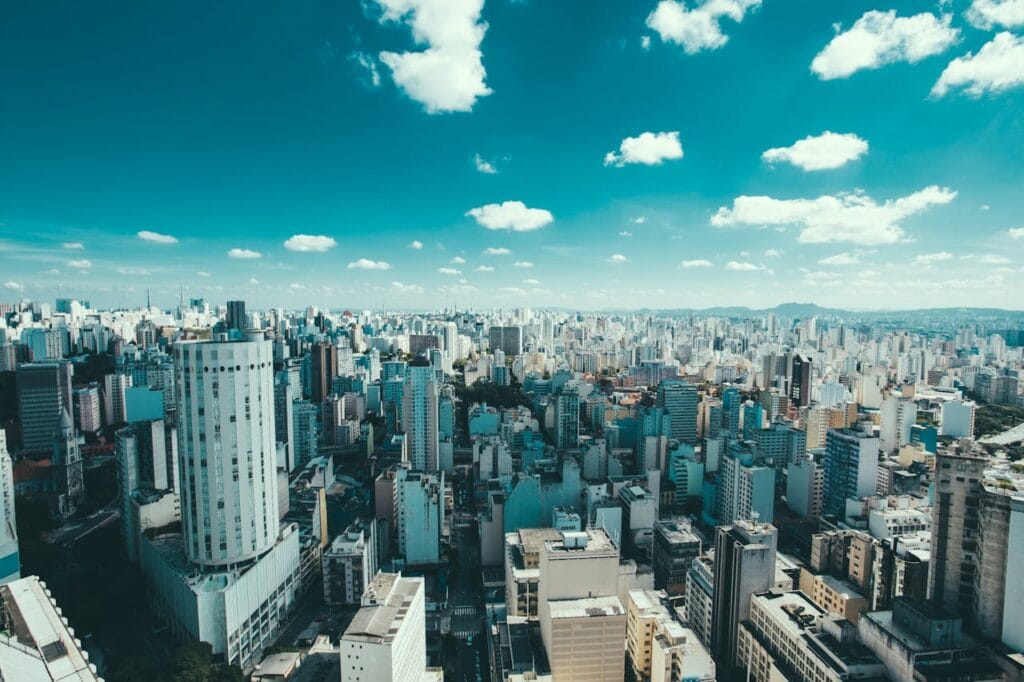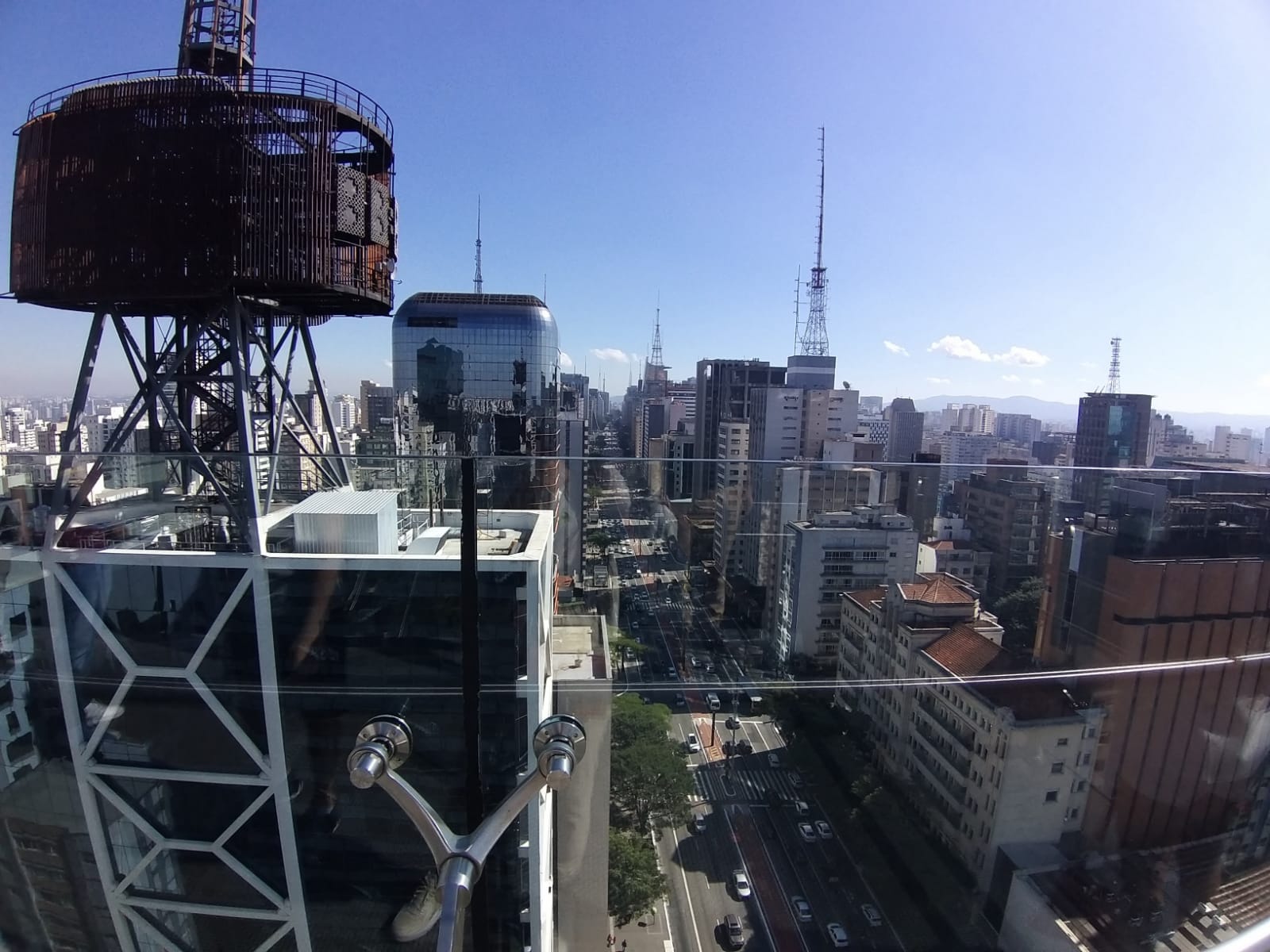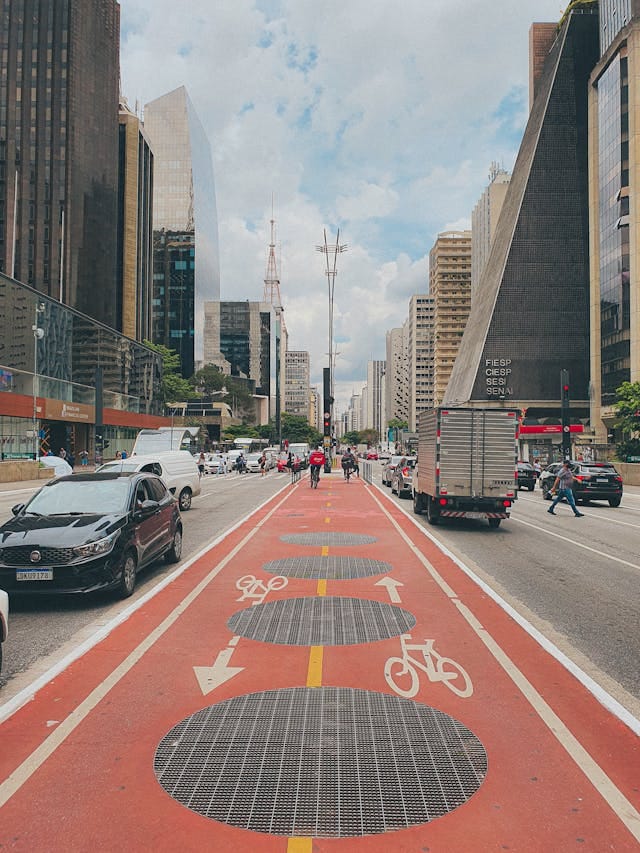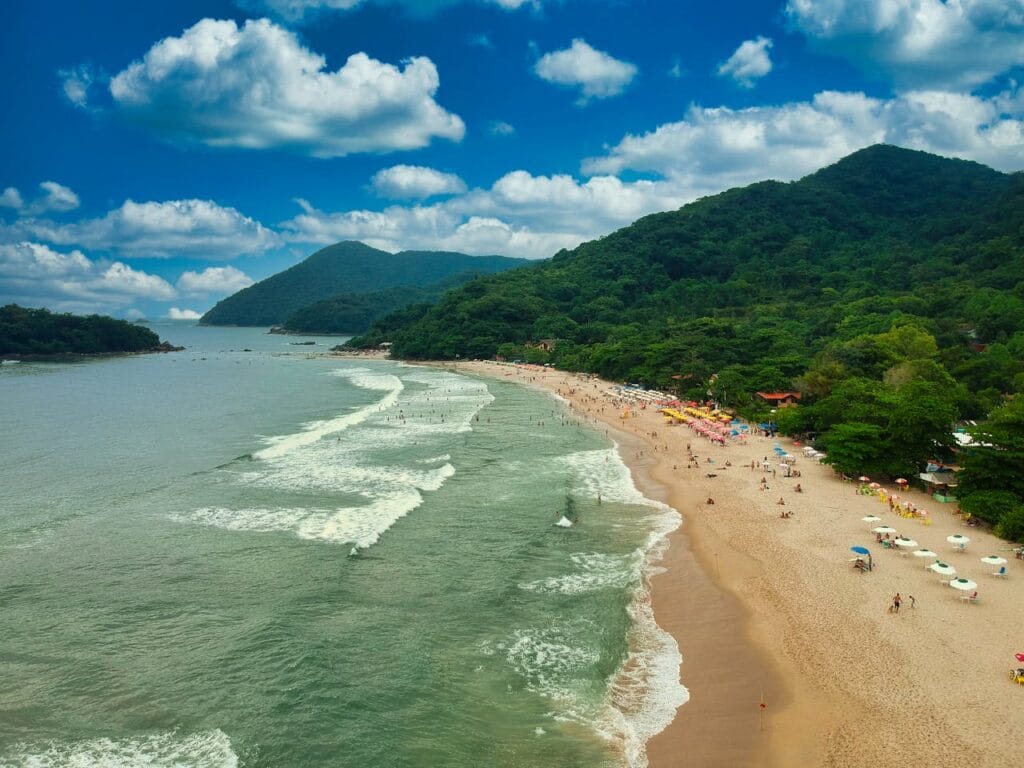
São Paulo, the largest city in Brazil and South America, is a metropolis known for its vibrant culture, exceptional cuisine, and thriving business scene.
In addition to being the country’s financial hub, attracting countless visitors for business, the city is rich in culture and events, boasting numerous museums, exhibitions, theater performances, cultural, artistic, and sports events, concerts, and more.
The city also stands out for its culinary diversity, offering a wide range of local and international dishes, as well as being home to many restaurants ranked among the best in the world.
This São Paulo Travel guide will answer the most common questions travelers ask about São Paulo, from where to stay to what to eat, ensuring you have a smooth and exciting trip.
✈️ Airports: Guarulhos International Airport (GRU), which handles both international and domestic flights, and Congonhas Airport (CGH), primarily serving domestic routes.
⏰ Time Zone: BRT (Brasília Time), UTC/GMT -3 hours
💰 Currency: Brazilian Real (BRL)
🗣 Language: Portuguese
🎫 Brazil Visa: As of April 10, 2025, travelers from the United States, Australia, and Canada will need a visa to enter Brazil. However, most Europeans, South Americans, and Japanese citizens do not require a visa. Head here to see if you need a Brazil travel visa.
🔌 Electricity Socket: The outlets in Brazil are mostly Type N (three round pins) and Type C (two round pins). In most hotels and rental apartments, the majority of outlets are 127V, but certain outlets, particularly in bathrooms and kitchens, are 220V. These specific outlets are usually labeled to indicate their voltage. Visitors from other countries, including the U.S., are advised to bring a universal adapter to use electrical devices from abroad and check their devices for compatibility with the voltage.
📲 Brazil SIM Card: Curious if you need a SIM card for Brazil? The answer is absolutely yes! Every traveler will benefit from having one, and this article dives into all the details about the best SIM card options for Brazil. For a convenient and fast solution, consider getting an eSIM from Airalo – it works right after landing and skips the hassle of physical SIM cards.
Sign up Now for the Best Travel Tips exploring Brazil!
Get expert travel tips, detailed itineraries, and insider recommendations for your trip.
What’s the Best Time to Visit São Paulo?
São Paulo can be visited year-round, but depending on your preferences, there are better seasons to explore the city.
Summer (December to March): This is the warmest time of the year, with temperatures ranging from 20°C to 30°C (68°F to 86°F). However, it can be quite humid and rainy, so pack an umbrella!
Winter (June to September): Winter temperatures are mild, ranging from 10°C to 20°C (50°F to 68°F). It’s cooler and less humid, which can make walking around more comfortable.
Best Months: April to May and September to November offer a nice balance between warm temperatures and fewer rain showers.
Besides the weather, it’s also worth checking the city’s cultural and event calendar before your trip.
While the permanent attractions are already fantastic, São Paulo hosts so many temporary events that each visit can offer a completely different experience, from festivals and concerts to sporting events, cultural exhibitions, and more.

How to Get to São Paulo?
By Air: São Paulo has two main airports: Guarulhos International Airport (GRU), which handles both international and domestic flights, and Congonhas Airport (CGH), primarily serving domestic routes.
Most airlines operate flights to São Paulo, and it’s highly likely you’ll have a layover there when traveling to other destinations within Brazil.
Both airports offer various transportation options to reach the city center, including taxis, Uber, the subway system, and Airport Bus Service.
By Land: São Paulo has an extensive and efficient long-distance bus network, making it easy to reach by bus from other cities within Brazil and neighboring countries.
The two main bus terminals are Tietê Bus Terminal and Barra Funda Bus Terminal, and you can reach your hotel by Uber, taxi or Metro.
Alternatively, you can rent a car and enjoy a drive to and from São Paulo and other cities in Brazil. However, keep in mind that Brazil is a vast country, and depending on where you’re coming from or headed, your journey by land might take several hours.
For instance, São Paulo is about a 6-hour drive from Rio along the BR-116 highway (Dutra). The road is well-maintained, but tolls apply along the way.
By Sea: São Paulo is accessible via the nearby port of Santos, the busiest container port in Latin America and a popular stop for cruise ships.
Santos is about 70 km (43 miles) from São Paulo and serves as the arrival point for passengers traveling on cruise ships along Brazil’s coastline.
After docking in Santos, you can easily reach São Paulo by bus, taxi, or private transfer.
Where to Stay in São Paulo?

Choosing where to stay in São Paulo can make a big difference in your trip, given the city’s vast size and the variety of experiences different neighborhoods offer.
Each area has its own atmosphere and attractions. Whether you’re looking for luxury, nightlife, or proximity to key landmarks, São Paulo has a neighborhood to suit every traveler’s needs.
Here’s a breakdown of some of the most popular areas for tourists:
Paulista Avenue: the most sought-after destination for tourists, is the financial hub of the city and offers a blend of mid-range and luxury hotels.
Staying here places you at the heart of the action, with museums, restaurants, and shopping all within walking distance.
Additionally, the area is well-served by public transportation, with a subway line running along the entire avenue and its ends.
You’ll be located in one of the safest and most lively parts of the city, with access to numerous activities. If you’re unsure where to stay in São Paulo, Paulista is the best choice.
Jardins: This upscale neighborhood is located near Paulista Avenue and is ideal for first-time visitors. It boasts an array of high-end hotels, shops, and restaurants. The area is safe and highly walkable.
The only downside is that accommodation prices tend to be higher. However, even for those on a budget, it’s still possible to find options that fit within your financial constraints.
👉 Book your accommodation in São Paulo with ease: Hoteis.com has great hotel options, and Hostelworld lists the best hostels in the city.
Vila Madalena: If you’re looking for a more bohemian atmosphere, Vila Madalena is perfect. Known for its street art, lively bars, and cool galleries, this area is ideal for younger travelers or those looking to experience São Paulo’s artsy side.
Pinheiros: A trendy neighborhood with many restaurants and bars, Pinheiros is a great place for foodies and those looking to explore São Paulo’s nightlife.
You’ll find a variety of craft beer bars, artisanal coffee shops, and gourmet restaurants. It’s also conveniently connected by the metro.
Itaim Bibi: Itaim Bibi is a sleek, modern area known for its skyscrapers and upscale restaurants. It’s a key business district, but also offers plenty of nightlife and high-end dining.
Staying in Itaim Bibi is ideal if you’re in São Paulo for business or want to enjoy the city’s luxury offerings.
Centro (Downtown): Centro is the historic heart of São Paulo, where the city was founded. It’s filled with architectural landmarks, museums, and historical sites.
It’s also a budget-friendly area for travelers who want to stay close to major attractions without spending too much on accommodation.
Centro is well-connected to public transportation, including the metro and buses, making it easy to explore other parts of the city.
However, some areas can be a bit unsafe at night. It’s recommended to avoid walking alone in less populated streets after dark and stick to the well-traveled areas.
Best Things to Do in São Paulo

São Paulo is packed with things to see and do, from cultural experiences to parks and breathtaking views. Here are the top attractions you shouldn’t miss:
- Paulista Avenue: This is the heart of São Paulo and a must-visit destination. The avenue is home to the São Paulo Museum of Art (MASP), one of the best art museums in South America, as well as numerous shops, cafes, and cultural institutions like Casa das Rosas, Japan House, Itaú Cultural, and Instituto Moreira Salles.
- Ibirapuera Park: São Paulo’s answer to Central Park, Ibirapuera Park is a green oasis in the city. You can walk, run, rent bikes, visit museums within the park (like the Museum of Modern Art), or simply enjoy a picnic.
- Liberdade (Japanese District): São Paulo is home to the largest Japanese community outside Japan, and the Liberdade neighborhood reflects this. It has become a multicultural area, also home to Chinese and Korean communities, adding even more diversity to its appeal. Visit the Japanese markets, enjoy delicious sushi, and take in the unique blend of cultures.
- Mercado Municipal: For food lovers, the Mercado Municipal is a paradise. Renowned for its enormous mortadella sandwiches, fresh exotic fruits, and Pastel de Bacalhau, it’s an excellent place to sample local delicacies.
- Batman Alley (Beco do Batman): Located in Vila Madalena, this open-air gallery features walls adorned with ever-changing graffiti by local and international artists, making it a fantastic spot for Instagram-worthy photos.
- Vila Madalena: In addition to Batman Alley, Vila Madalena is filled with small galleries, studios, and artisan shops. You can easily spend the day wandering through the neighborhood, admiring its creativity, and stopping for coffee at one of the trendy cafes. The area also offers a lively nightlife scene, complete with bars, live music venues, and clubs.
- Pinacoteca: This art museum is one of the oldest in São Paulo, housing a stunning collection of Brazilian art in a historic building. In the Pinacoteca area, you can visit several other museums, including the Museu de Arte Sacra, the Catavento Museum—great for families—and the Museu da Língua Portuguesa.
- Museu do Ipiranga (São Paulo’s Independence Museum): This recently renovated museum is a must-see for history enthusiasts. Located in the Independence Park, the Museu do Ipiranga celebrates Brazil’s independence and showcases exhibitions about the country’s history, culture, and art. The building itself is a architectural landmark, surrounded by gardens inspired by Versailles.
- Viewpoints: São Paulo offers several viewpoints where you can take in the grandeur and vastness of the city. Notable spots include the SESC viewpoint on Avenida Paulista, the Terraço Itália restaurant and bar, the iconic Copan and Martinelli buildings, the Farol Santander, Sampa Sky—located in the tallest building in the city—and the new São Paulo Ferris Wheel.
- Historic Center: São Paulo’s Historic Center, or “Centro Histórico,” is the birthplace of the city and boasts many of its oldest and most significant buildings and landmarks. This area is rich in colonial architecture, churches, and cultural institutions. Here, you can explore Sé Cathedral, Pátio do Colégio—the site of São Paulo’s founding—Municipal Theater, Largo São Francisco and São Francisco Church, Viaduto do Chá (Tea Bridge), Martinelli Building, Farol Santander, and Rua 25 de Março (Shopping District).
👉 Want to see it all? This 7-hour Tour covers São Paulo’s top attractions. If you’d rather soak in the history and vibe of downtown, this Downtown Walking Tour is for you.

What Are Some Must-try Foods in São Paulo?
São Paulo is often referred to as the culinary capital of Brazil. The city’s diverse population has resulted in an equally diverse food scene. Whether you’re in the mood for traditional Brazilian dishes, street food, or international cuisine, São Paulo has something for every palate.
Here are some must-try dishes and where to find them:
- Feijoada: A traditional Brazilian dish made of black beans, pork, and various cuts of meat, served with rice, collard greens, and orange slices. Head to Bolinha for one of the best feijoadas in the city.
- Pastel: A deep-fried pastry filled with cheese, meat, or other ingredients, often found at street markets and fairs. Try the Mercado Municipal (Municipal Market) or Liberdade (Japanese District) for some great options.
- Pizza: São Paulo is famous for its pizza, and locals take it very seriously. São Paulo’s pizza is typically thin-crust, loaded with fresh ingredients, and baked to perfection in wood-fired ovens. Make sure to try a slice (or two) from Bráz Pizzaria or Carlos Pizza.
- Pão de Queijo: a small, chewy cheese bread made from tapioca flour and Minas cheese. It’s a staple snack across Brazil and particularly beloved in São Paulo. You can find pão de queijo in almost every bakery, cafe, or snack bar in the city. For an authentic experience, visit a padaria (bakery) like Bella Paulista.
- Mortadella Sandwich: São Paulo is famous for its gigantic mortadella sandwich, a sandwich packed with layers of mortadella sausage, typically served warm on a crusty roll. Head to the Mercado Municipal (Municipal Market) to enjoy the original mortadella sandwich at Bar do Mané or Hocca Bar.
- Coxinha: A popular street food, coxinha is a deep-fried dough filled with shredded chicken. You can find it at bakeries or casual eateries like Frangó.
- Churrasco: Brazilian barbecue, or churrasco, is a must. For a top-tier experience, visit Fogo de Chão or Barbacoa, where you can enjoy an endless supply of grilled meats served right at your table.
- Média com pão na chapa: is a classic São Paulo breakfast found in local padarias (bakeries). “Média” is a café com leite, a mix of strong coffee and milk, paired with “pão na chapa,” crispy grilled bread slathered with butter or requeijão (Brazilian cheese spread). Most traditional bakeries serve this breakfast, with popular spots including Padaria São Domingos and Bella Paulista, both favorites among locals and visitors.
- Brigadeiro: No visit to São Paulo would be complete without trying this sweet treat. It’s a ball of condensed milk, butter, and cocoa powder, rolled in chocolate sprinkles. You can find it in bakeries or specialized shops like Maria Brigadeiro.

How Many Days do You Need in São Paulo?
Ideally, you should spend at least three days in the city. However, exploring all that São Paulo has to offer is such a delight that you might consider planning a four-day itinerary or more—extra time will be well worth it.
The city boasts a wealth of options, particularly gastronomy, entertainment, and leisure activities. A few days may feel rushed, and you’ll definitely want to return to experience even more.
How Do You Get Around São Paulo?
Here’s a detailed guide on how to get around São Paulo:
- Metro: São Paulo’s metro system is one of the most efficient ways to get around the city. It’s fast, affordable, and connects many key areas, including tourist spots, business districts, and shopping centers. The metro is generally considered safe and well-maintained. Lines are color-coded, and most stations are marked with clear signage in Portuguese and English.
- Buses: Buses are widely available throughout the city, including areas not served by the metro. However, they can be crowded and confusing for tourists, and pickpocketing can be a concern on busy routes.
- Uber and Taxis: Uber is a safe and reliable way to get around São Paulo. It’s often cheaper than regular taxis, and you don’t need to worry about language barriers since you can input your destination directly in the app.
- Car: Driving is not the best option for tourists arriving in the city. The traffic can be extremely confusing, with constant congestion and high parking costs. It’s advisable to use the subway or opt for Uber/taxis instead.
- Bikes: For short distances, bike rentals are a great way to get around, especially in bike-friendly areas like Ibirapuera Park or along Avenida Paulista on Sundays when it’s closed to cars.
- Walking: Walking is an excellent way to explore São Paulo’s neighborhoods, such as Vila Madalena, Jardins, Liberdade, and Avenida Paulista. Although long distances can be challenging, some pedestrian-friendly areas offer an intimate experience of São Paulo. However, be cautious, as some others neighborhoods may feel unsafe for walking, particularly at night or in less touristy areas.

Is São Paulo Safe for Tourists?
Safety is a common concern for anyone visiting a major city, especially in South America. São Paulo, like any large metropolis, has its safe and less safe areas. However, with some basic precautions, tourists can navigate the city safely.
The city’s tourist areas, including Jardins, Vila Madalena, and Paulista Avenue, are typically well-policed and safer, especially during the day. However, other neighborhoods and parts of the outskirts may be less secure, particularly after dark.
For staying safe, stick to well-lit areas and busy streets, use ride-hailing apps like Uber rather than public transportation late at night, keep an eye on your belongings and avoid flashy jewelry or accessories. Additionally, avoid using your phone on the street, as theft can occur.
What Day Trips Can You Take From São Paulo?
If you have extra time, several day trips from São Paulo offer a refreshing break from the city’s fast pace:
- Campos do Jordão: Known as the “Brazilian Switzerland,” this mountain town features a cool climate, European architecture, and a cozy atmosphere, just a 2.5-hour drive away.
- Santos: A coastal city about 1.5 hours from São Paulo, Santos is famous for its coffee history and beautiful beaches.
- Ilhabela: This island, accessible in about 3 hours by car and ferry, is renowned for its gorgeous beaches and waterfalls.
- Guarujá: Just 1.5 hours away (95 km), Guarujá is a popular beach destination known for its lively atmosphere and beautiful beaches, such as Enseada, Pitangueiras, and Astúrias.
- Ubatuba: Ubatuba boasts over 100 beaches and lush Atlantic Forest. It’s about 3.5 hours away (225 km), with highlights including Praia Grande, Praia do Félix and Praia das Toninhas.
- São Sebastião: Known for its beautiful beaches and upscale beachfront living, São Sebastião offers a mix of tranquility and luxury. Famous beaches include Maresias, Juquehy, and Barra do Sahy, located about 2.5 hours away (200 km).
- Bertioga: Just 1.5 hours from São Paulo (105 km), Bertioga is a quieter, family-friendly beach destination with beautiful beaches like Praia da Enseada and Riviera de São Lourenço, perfect for outdoor activities without the crowds.
👉 I recommend renting a car with Rentalcars.com if you’re planning day trips beyond the city — it gives you the freedom to explore São Paulo’s surroundings on your terms.



